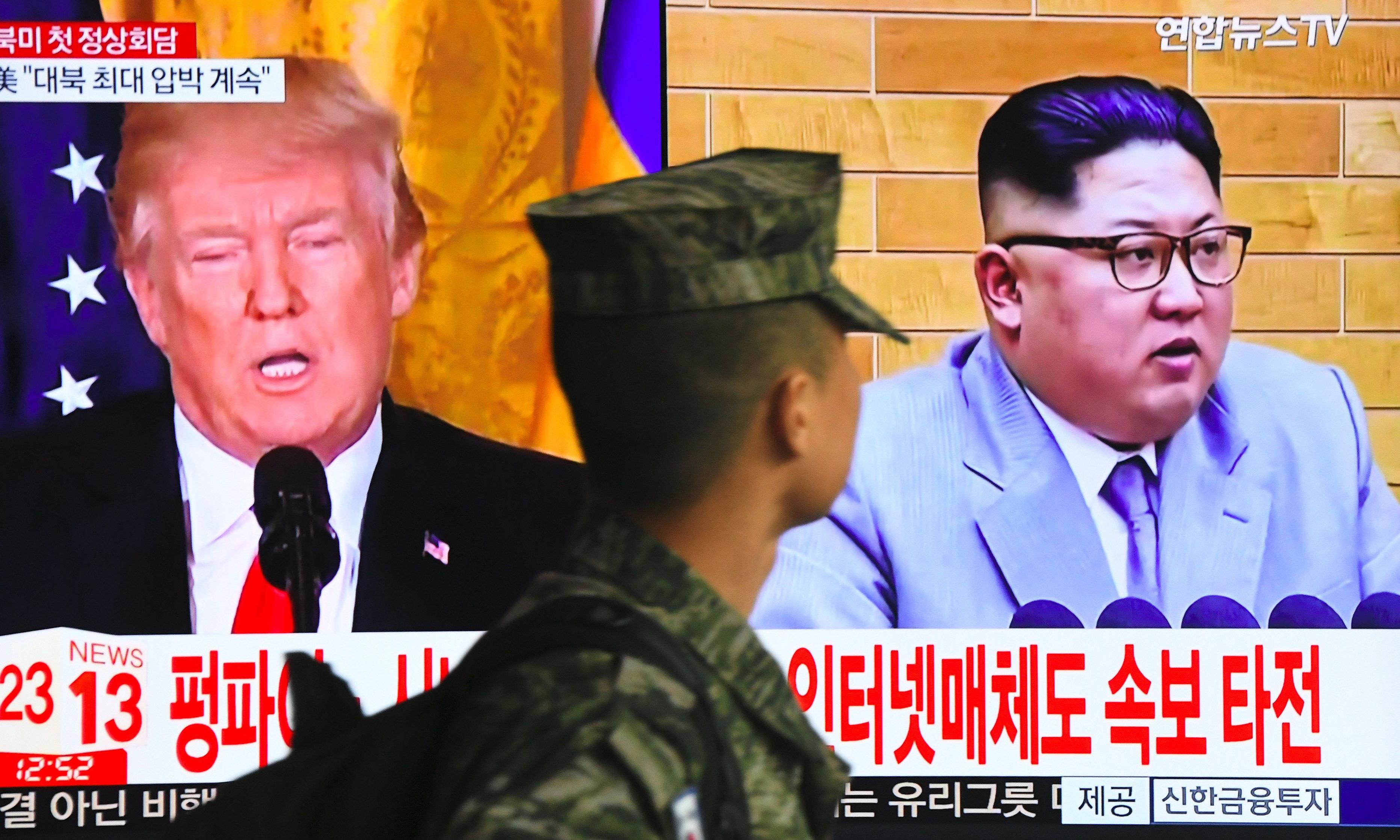Foreign journalists headed to North Korea on Tuesday to watch the promised destruction of its nuclear test site, a move seen as a goodwill gesture before a planned summit with the United States.
Reporters from China, the US and Russia departed on a charter flight from Beijing, according to Chinese state broadcaster CGTN which is part of the contingent, AFP reported.
The group will cover the demolition of the Punggye-ri nuclear testing site inside a mountain in the northeast of the country, which is scheduled to take place between Wednesday to Friday, depending on the weather.
Agence France-Presse is one of a number of major media organizations not invited to cover the event.
Pyongyang announced earlier this month that it planned to “completely” destroy the facility by blowing up the test site’s access tunnels, a move welcomed by Washington and Seoul.
The decision came after North Korean leader Kim Jong-un declared the country’s nuclear force complete and said it had no further need for the complex
Experts are divided over whether the move will render the site useless—previous similar gestures have been rapidly reversed when the international mood soured.
“Frankly a nuclear test site can be easily reassembled,” Kim Hyun-wook, an expert at the Korea National Diplomatic Academy, told AFP.
“But still, by dismantling it, North Korea is showing its willingness to not conduct nuclear tests at least for a while and signaling it has sufficient number of nuclear weapons,” he added.
Yang Moo-jin, from the University of North Korean Studies, said it was significant Pyongyang was not using the site’s destruction as a “bargaining chip” with the United States ahead of the planned June 12 summit in Singapore between Kim and US President Donald Trump.
“This move testifies sincerity in the North’s commitment to defusing tension through negotiations,” he said.
Diplomatic Ups and Downs
Punggye-ri has been the site of all six of the North’s nuclear tests, the latest and by far the most powerful in September last year, which Pyongyang said was an H-bomb.
Dialogue brokered by South Korea has seen US-North Korea relations go from trading personal insults and threats of war after that test to planning for a summit. But the meeting has already hit diplomatic bumps.
Washington says it wants to see the “complete, verifiable and irreversible denuclearization” of the North.
Pyongyang abruptly threatened to pull out of the summit last week and canceled talks with the South, accusing Washington of cornering it with a unilateral demand for denuclearization.
The hardened rhetoric left US officials scrambling to work out whether the summit would take place.
South Korea’s president Moon Jae-in has flown to Washington and was to meet Trump later on Tuesday in an attempt to put the detente back on track.
Observers will be watching the nuclear test site destruction ceremony closely for any clues to the North’s mood.
Pyongyang previously said South Korean journalists would be allowed to attend this week’s ceremony. But the North refused at the last minute to accept a list of South Korean journalists.
Skeptics warn that Pyongyang has yet to make any public commitment to give up its arsenal and has a history of going back on its word.
In 2008 the regime blew up a cooling tower of its atomic reactor at Yongbyon, the facility that produced the plutonium that allowed North Korea to carry out its first successful nuclear test.
That ceremony was also held with much fanfare, complete with international invited journalists, and was heralded as a mark of Pyongyang’s commitment to denuclearization talks.
The following day then President George W. Bush lifted some sanctions. But when talks collapsed the Yongbyon cooling tower was quickly rebuilt and the reactor restarted.
In the intervening years, with diplomacy going nowhere, North Korea went on to test five more nuclear devices and develop missiles it said was capable of reaching the United States.


